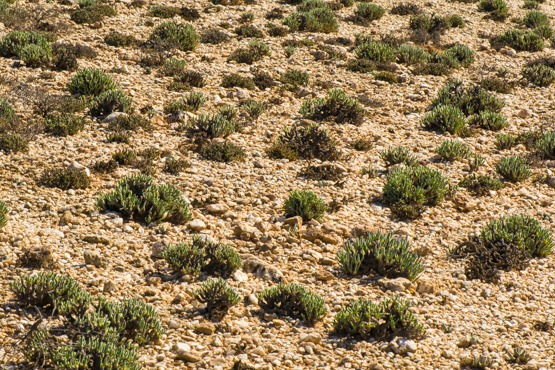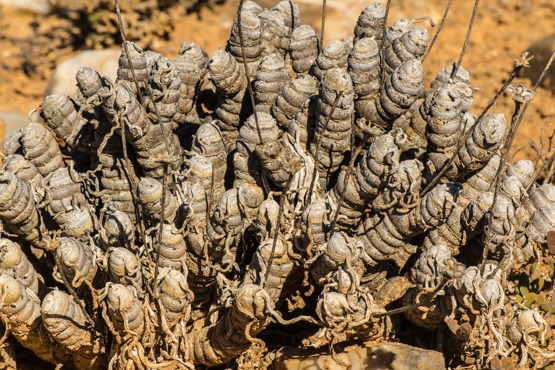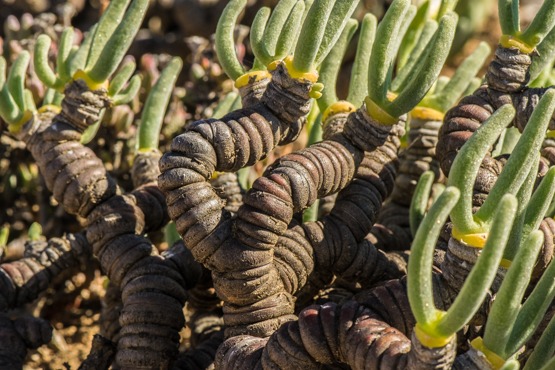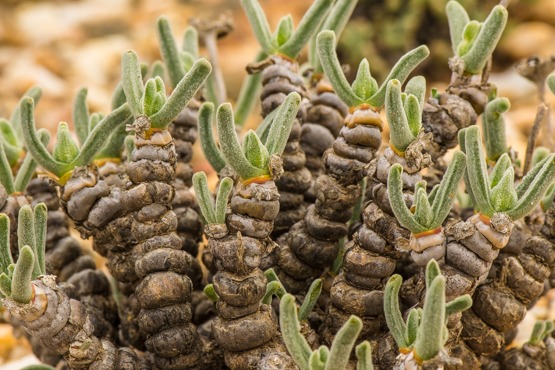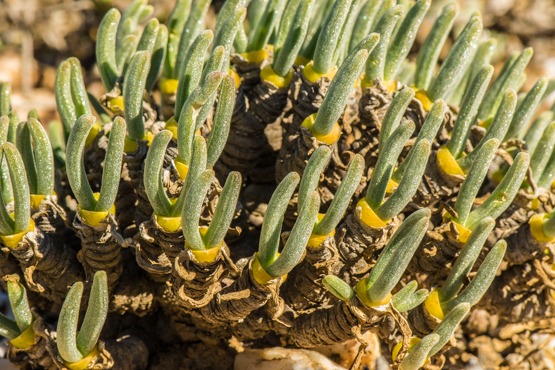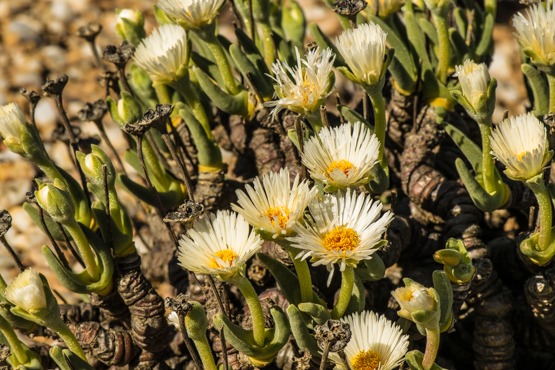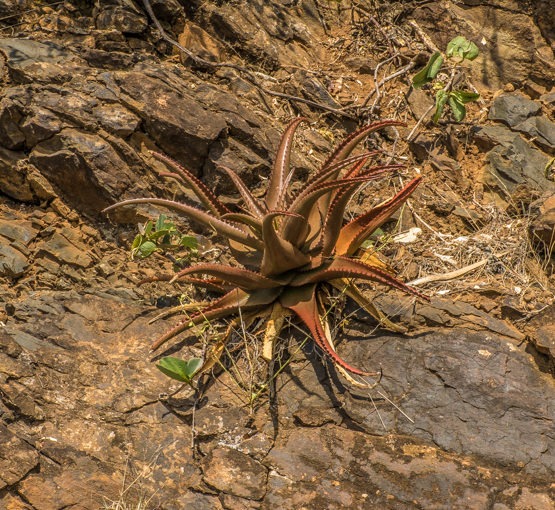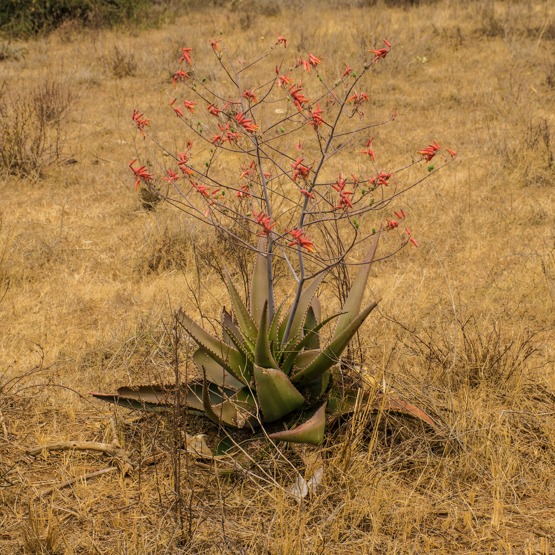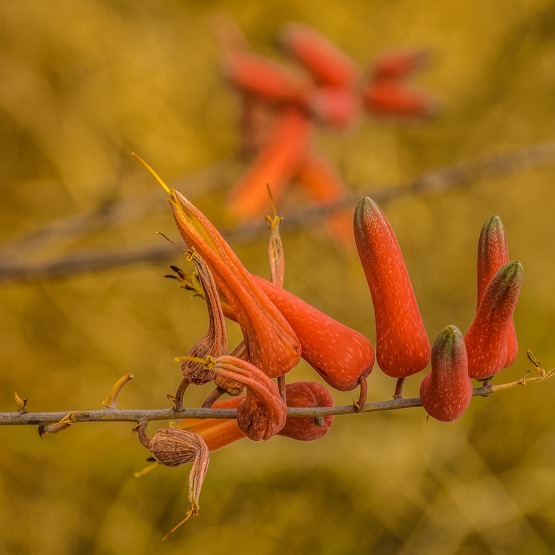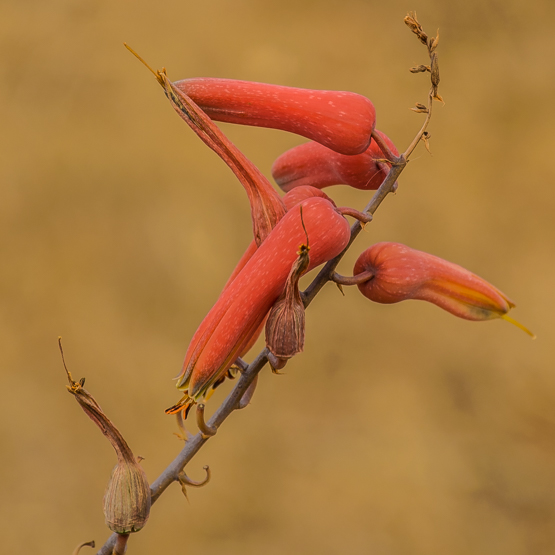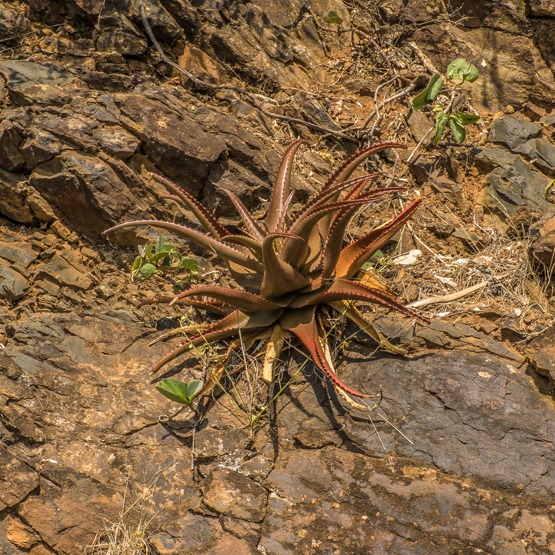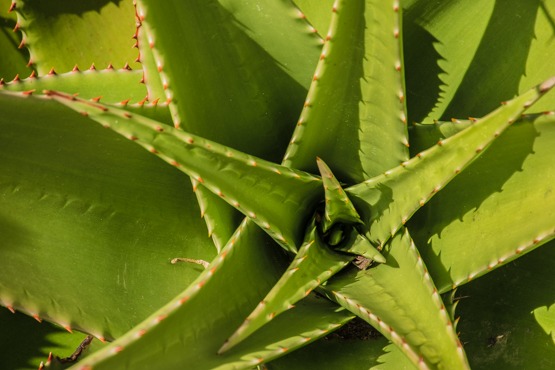Common names: ertjievygie, pea mesemb, bobbejaanvingers.
The most distinct features of the genus Monilaria are the constricted stems and the persistent leaf bases which look like a string of beads (Latin monilaria = a collection of strings of pearls)
Each growing season, the plants form a short and a long leaf pair: the first pair is largely fused so that it looks like a flattish, rounded body; the second pair emerges through the tip of this body and consists of elongated leaves which are cylindrical or almost triangular in cross-section and only fused at their bases.
M. moniliformis -the most well-known species of the genus- is a shrublet to 15 cm high, with barrel-shaped internodes which make it relatively easy to recognize the plants.
In July-August the flowers appear; they are to 4 cm across and have relatively long stalks (to 5 cm) and usually white petals ( sometimes tinged yellow); the filaments are white, orange, or purple.
The species occurs in the Vredendal-Vanrhynsdorp-Klawer area of southern Namaqualand), where it grows fully exposed, mostly on clay and quartz patches. This is the southernmost part of the distribution area of the genus.
